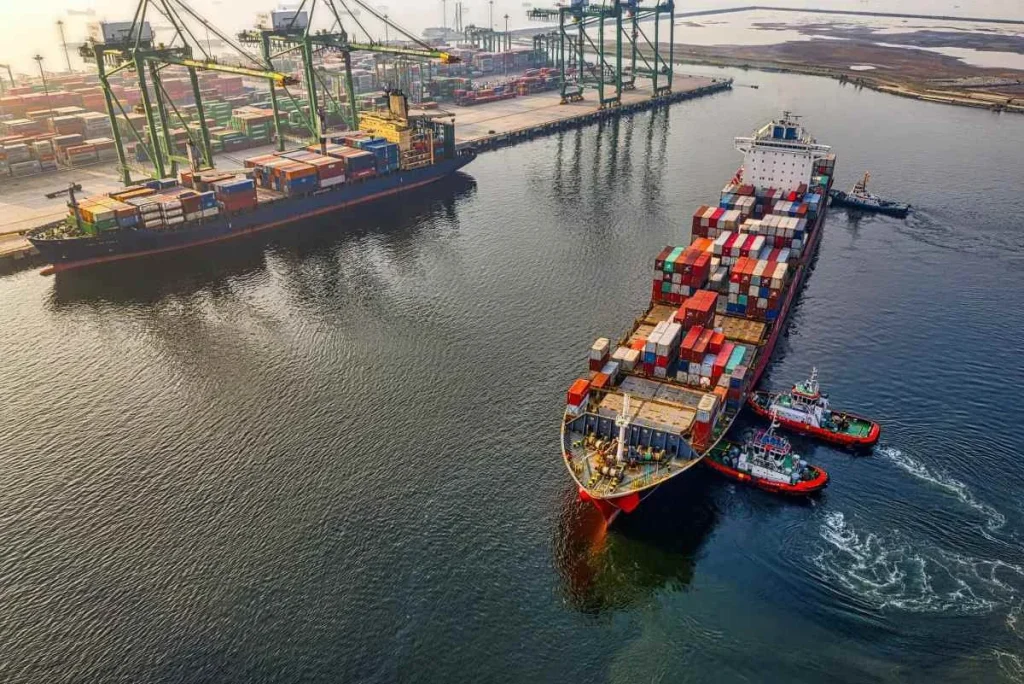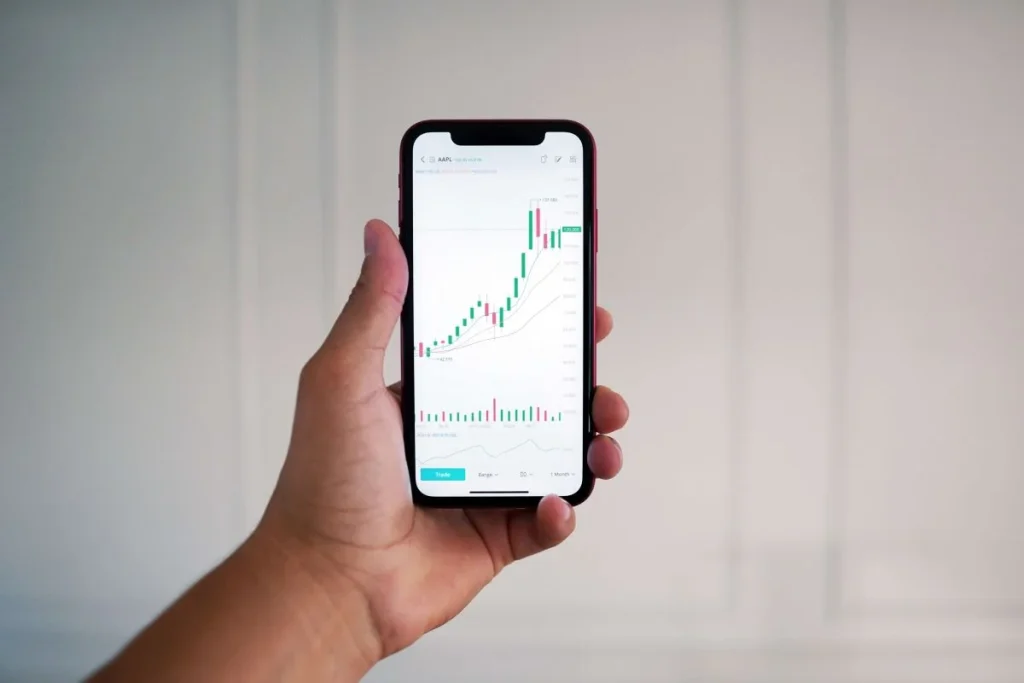Economists have upgraded growth forecasts for major Southeast Asian countries in 2022, driven by election-related spending in the Philippines and the reopening of Thailand’s tourism industry.
Despite the COVID-19 pandemic continuing to cast a shadow on full-fledged economic expansion here in the Philippines, the economic outlook continues to look bright despite the increasing number of cases and delay on resumption of face-to-face activities. That said, are the number of cases and infection rate the only factor that impacts the economic outlook? Well, the answer is an obvious no.
In this article, we take a hopeful look at the 2022 Philippine Economy to discuss anything and everything under the sun, from a general forecast for 2022 to individual factors that could positively or negatively impact the growth of the economy.
For individuals looking to get started investing in the markets, please remember that this article is not financial advice. It’s a speculatory and research-ridden opinion article that should not be treated as a step-by-step guide to navigating the financial markets.
That said, let’s get into it.
2021 Lookback
Post-2020 Covid, a rebound had always been foreseen as underway for the Philippine economy and local businesses alike during 2021. Unfortunately, it’s apparent to us now that this recovery remains not at full speed.

Despite that, the year 2021 has treated the economy well, with economic growth swinging to positive territory in the second quarter of the year and effectively lifting the country out of the recession that it was initially in. On average, the economy expanded by 4.9% as of the end of September and is on track with the higher target band as forecasted by President Rodrigo Duterte’s economic team.
In a report by CNN Philippines, Union Bank of the Philippines chief economist Ruben Carlo Asuncion had said that the rollercoaster ride of emotions during the year 2021 was caused by the on and off surge in cases – which in turn immediately called for lockdowns.
In 2021, lockdowns returned twice this year: in late March and in August as authorities aim to quash the wave of infections caused by Alpha, Beta, and Delta throughout the year.
So what about the different sectors? How did they fare throughout the year?
Well, local business analysts have always stressed that Covid-19 is here to stay – through the impact it holds on different industries may vary. Existing telco players, such as Converge ICT, Globe, and PLDT, for example, were all big gainers on the year as they have recorded blockbuster financial performances due to staying home.
On the other hand, we have businesses tied to the tourism sector that continue to reel from the COVID-19 shock. The air transportation sector like PAL, Cebu Pacific, and Bloomberry Resorts all faced difficulty during these trying times.
Does this mean that this trend will continue to 2022? Well, no, it doesn’t.
Economic Forecast for 2022
Omicron prompted governments around the world to scale back plans to reopen borders while they assess the efficacy of existing COVID-19 vaccines.

Despite this, the 2022 GDP growth forecast for the Philippines was revised down from 7% to 5.3%, which remains a definite increase from 2021’s projection of 5.1%. Economists have attributed this upward revision to declining COVID-19 cases and the rising expectations for increased spending ahead of the May 2022 presidential election – although the downward trend was implemented to take into account the resurgence of COVID-19 cases in the Philippines.
Moving to a more positive outlook, reopening effects and lockdown easing will encourage tourism activity and consumption, as people from across the globe continue to get vaccines and boosters and then travel to nations that accept vaccinated visitors and do not impose quarantine requirements.
When comparing this to other nations, the Philippines may just be better off than other countries. Malaysia’s economic growth forecast, for example, was revised down from 6.2% to 6.0% mainly due to the economic contraction caused by stricter lockdowns and the third wave of COVID-19.
Despite COVID-19 remaining the biggest risk in most parts of Asia, there are still undoubtedly so many more factors that go into the growth of the economy – let’s take a look at some of those today.
Factors That Affect Growth
Omicron and COVID
The ADB reduced its growth forecast for developing Asia to 7% this year and to 5.3% in 2022, amid uncertainty brought by the emergence of the Omicron variant. The main risk, as we discussed obviously, is the resurgence of COVID-19 cases.

“Recent developments in Europe show that extensive virus outbreaks can occur even in highly vaccinated countries and force governments to retighten mobility restrictions. The emergence of the highly mutated Omicron variant brings additional uncertainty,” the ADB said in a report from Business World Online.
Given the fact that the Omicron variant is inarguably much more transmissible than other and earlier variants, its economic impact could be substantial. On the bright side, it’s also been found that the Omicron variant is less deadly than the other variant, providing a silver lining to the impact of this new variant.
“The Omicron variant has driven (business) sentiment lower, as have supply-chain disruptions eating into inventories and hurting capacity to meet increased demand. While the economic recovery has yielded improved sales and employment intentions, caution has increased,” Moody’s Analytics Senior APAC Economist Katina Ell said in the analysis as reported by Business World Online again.
Easing Mobility Restrictions
For the entire region of Southeast Asia, the ADB hiked its projection for 2022 from 5% to 5.1%. The primary factor behind this is the easing of mobility restrictions that will eventually lead to increased consumer spending in all socioeconomic classes.
Taking a look at an example, subregional growth slowed modestly in Q3 2021 as mobility restrictions tightened in the quarter to curb the spread of the highly transmissible Delta coronavirus variant.
It only makes sense that if, for example, the cases caused by the Omicron variant were to drop and lockdown and road restrictions were to be lifted, then people would be much more willing to travel and spend in things like groceries or their wants- increasing the flow of money in our economy and turning it, well, healthier.

On top of this, the continued vaccination of Filipinos has allowed the economy to slowly reopen, which in return boosted consumer and business confidence. Based on the statistics given by the Department of Health, over 42 million Filipinos have received their complete dose of the COVID-19 vaccine while over 55 million have received at least the first dose as of December 14.
Higher Real Wages
In recent years, the Philippine economy has made amazing strides in delivering inclusive economic growth. This just means that the elites are no longer the only ones who experience the growth of the economy, so does everyone else at all socio-economic levels. This fact is evidenced by two things: the declining poverty rates and the falling Gini coefficient. On top of that, unemployment has reached historically low rates, but underemployment remains high, near the 18-20 percent decade-long average.
Inflation
The headline inflation in the Philippines continued to exhibit a slower pace as it eased further to an understandable 4.2 percent in November 2021 from 4.6 percent in October 2021. Many people talk about inflation and the effect it has on the overall economy, they fail to realize that inflation impacts their daily lives the most.
Inflation is often referred to as the “worst tax” because its effects go unnoticed by people and are unreflected on financial statements. You may not think about it every time you’re at the store but think of it this way: if inflation goes up 7% every year, then your Php100 bill this year will go up to Php200 within the next decade.
That’s why it’s important for households and investors to understand the causes and effects of inflation as well as implement proper plans to ensure that they maintain their purchasing power.
One way to hedge your investments against inflation is to make sure that you invest your money in different industries, especially real estate. Crown Asia, a prime home developer in the Philippines, offers land and homes in areas that continue to experience urbanization. As demand for housing in urban areas increases, so do the prices – and what better way to take advantage of this than being a homeowner yourself?
Long-Term Stocks For Valuation
Overall, 2022 seems to be another positive year for the Philippine economy, albeit the growth rate was cut down a little due to Omicron. Other than that, there is some business in industries expected to either make a boom this year or remain relatively safe investments in the long run.

SM Investments Corporation
SM Investments is the conglomerate that comprises all the business segments of the SM Group of companies. They are involved in a variety of different industries including but not limited to retail, property, banking, and equity investments. It’s quite obvious that SM Investments is huge and it comes as no surprise especially given the immense impact that the group of companies has had on the Philippine economy and the people. This impact can be quantitatively shown in the company’s market cap. With over a Php 1.10 trillion peso market cap, SM investments corporation is the biggest company on the Philippine Stock Exchange.
Thinking about it this way, three of SM’s companies, SMIC, SMPH, and BDO, already comprise over 30% of the value of the Philippine stock market index and the company has excellent fundamentals and impressive earnings. While rewarding generous dividends, investors can look for and find profitable growth with SM stock.
Jollibee Foods Corporation
It would come as no surprise to anyone if we included Jollibee Foods Corporation in this list. Jollibee Foods is the largest food chain in the Philippines and its popularity and loyal customer base will only grow as the business expands around the world. Aside from the food chain of the same name, JFC also has subsidiaries of famous food china brands like Chowking, Red Ribbon, Mang Inasal, Greenwich, Burger King and so much more.
From an investment standpoint, JFC is the top leader of the food network industry listed on the Philippine Stock Exchange. While it’s been on a recent and severe decline given the pandemic, JFC stock has always been on a bullish trend historically speaking and now presents a perfect opportunity before the stock reaches all-time highs once again.
BDO Unibank
BDO Unibank was previously mentioned in this article but because of how good it is as a company, we decided to dive into it a little bit deeper.
BDO Unibank is and remains the number one bank in the Philippines in terms of assets, capital, deposits, loans, and receivables. The company has grown so much that it very recently reach a Php 535 billion market cap as well as a net income of 44.2 billion in 2020, which is representative of a 35% YOY percentage increase.
With 1434 branches nationwide, BDO can quite easily and efficiently reach and increase its client base. With growing revenue every year and technological advancements that match many of the rising stars in fintech, BDO remains one of the best stocks to buy for the long term if you’re looking to get into the financial sector.
Puregold
Puregold is a pretty famous name, both inside the financial markets and out. As one of the fastest-growing supermarket chains in the Philippines, the company now has more than 300 supermarket chains nationwide and a Php 109 billion market capitalization. Of course, this number will only continue to grow as the supermarket introduces more branches and builds a larger loyal shopper base.
An area of interest that one should take note of in this sector is the integration of technology into the daily operations of the business. In the US, Amazon implemented a system where you could order off of the internet and have your products delivered straight to your doorstep. If, for example, any one of these shopping businesses, including S&R, were able to start a mobile app with online delivery, the stock would undoubtedly skyrocket.
Related Blog: Trends to Expect in 2022: Design, Tech, and Business


